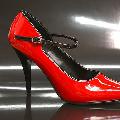คืนค่าการตั้งค่าทั้งหมด
คุณแน่ใจว่าต้องการคืนค่าการตั้งค่าทั้งหมด ?
ลำดับตอนที่ #13 : Shifting & Extensions
When cello music is written in “1st position” or “4th position,” this refers to where the hand is located when fingers are placed on the cello fingerboard.
Shifting refers to the hand smoothly moving up or down the fingerboard in order to play notes with the hand in a different position on the fingerboard.
The concept of positions and shifting is somewhat similar to an elevator traveling to different floors in a building. Most music for beginning cellists is written with the hand in 1st position, where the hand remains closer to the scroll of the cello. Using the elevator analogy, music for beginning cellists generally requires the hand to remain on the 1st floor in 1st position to finger most of the musical notes.
In order to play certain notes without awkward fingering or to reach some of the higher notes, it's often necessary to move the hand up to a higher position on the fingerboard to play them. This requires the hand to shift to a higher hand position such as the 4th position. Using the elevator analogy again, it’s similar to the hand moving up in an elevator to the 4th floor.
Although 1st position is the most commonly used position in beginning cello music, there are seven regular positions, plus the thumb position, and for very advanced cello music, 8th and higher positions (note: advanced cellists are usually less concerned with positions, and more focused on selecting fingering that works well with particular passages of music). For ease of playing, many musicians slightly shift their hands between positions, and use these "half-positions" to finger music, thus the entire length of the fingerboard could be used to number incremental positions, and the actual number of possible positions becomes irrelevant.
Extensions
Due to the length of the cello fingerboard, finger extensions are generally necessary when playing more than two consecutive whole tones in one position. What is often referred to as a "Backward Extension" requires the cellist to point their first finger back towards the top of the scroll in order to produce a whole tone interval between the first and 2nd fingers (e.g. moving the first finger a half-step back to produce Bb on the A string).
A "Forward Extension" also produces a whole tone between the first and second finger. In this instance, the first finger remains in place (as in the note B on the A string), and the second finger stretches forward towards the bridge (the thumb, third and fourth finger should move forward towards the bridge along with the 2nd finger).


ความคิดเห็น